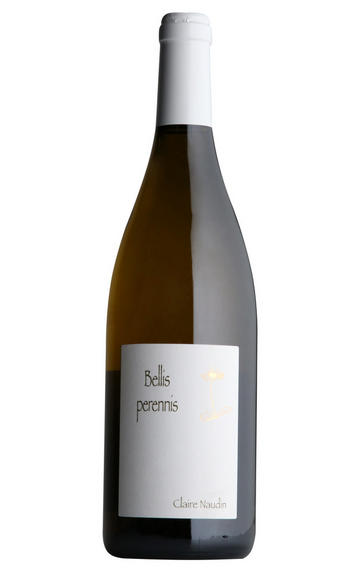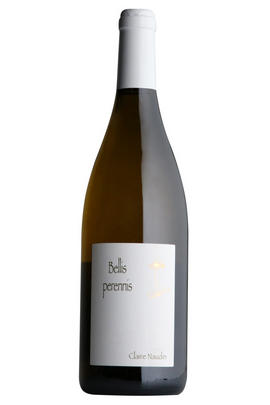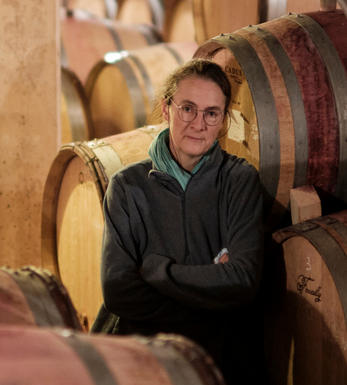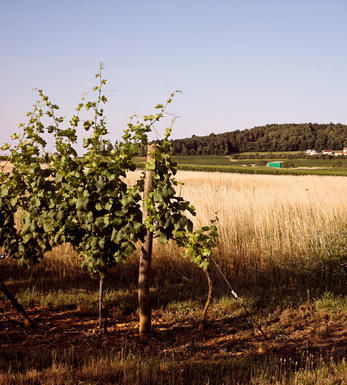
2019 Hautes-Côtes de Beaune Blanc, Bellis Perennis, Dom. Naudin Ferrand

About this WINE

Domaine Naudin-Ferrand
Claire Naudin, one of Henri Naudin-Ferrand’s three daughters, has been in charge of this small domaine based in the Hautes Côtes at Magny-les-Villers, a village that sits astride the dividing line between Hautes Côtes de Beaune and Hautes Côtes de Nuits, since 1994.
Claire is relatively susceptible to sulphur and uses the product as little as possible. Though some of the wines are made in an ‘orthodox fashion, the most exciting wines are those which are vinified with whole bunches (all the stems) and without sulphur, though some SO2 is added at bottling to ensure that the wines remain stable thereafter.
Claire’s theory, which her wines bear out admirably, is that there is none of the harshness sometimes evident when the bunches are vinified with their stems if sulphur is not used. Instead a magical floral perfume emanates from the wine.

Bourgogne Hautes-Côtes de Beaune
Hautes-Côtes de Beaune in Burgundy is located on the slopes and plateaus above the Côte de Beaune, one of the world's most renowned wine-producing areas, stretching along the hills and valleys.
The climate is characterised by its semi-continental nature, with cool winters, warm summers, and moderate rainfall. This region's terroir (the combination of soil, climate, and geography) significantly influences the character of the wines produced here.
Pinot Noir and Chardonnay are predominantly cultivated like the rest of Burgundy. These two grape varieties thrive in the region's soil and climate, producing exceptional wines with unique characteristics. Red wines made from Pinot Noir in Hautes-Côtes de Beaune often display elegant fruit flavours, delicate tannins, and a notable expression of terroir. On the other hand, white wines crafted from Chardonnay showcase crisp acidity, minerality, and a rich, floral bouquet.
While the Hautes-Côtes de Beaune might not be as famous as some of the more prestigious appellations within Burgundy, it is an exciting and promising region, producing distinct, elegant wines that reflect its unique terroir.

Chardonnay
Chardonnay is often seen as the king of white wine grapes and one of the most widely planted in the world It is suited to a wide variety of soils, though it excels in soils with a high limestone content as found in Champagne, Chablis, and the Côte D`Or.
Burgundy is Chardonnay's spiritual home and the best White Burgundies are dry, rich, honeyed wines with marvellous poise, elegance and balance. They are unquestionably the finest dry white wines in the world. Chardonnay plays a crucial role in the Champagne blend, providing structure and finesse, and is the sole grape in Blanc de Blancs.
It is quantitatively important in California and Australia, is widely planted in Chile and South Africa, and is the second most widely planted grape in New Zealand. In warm climates Chardonnay has a tendency to develop very high sugar levels during the final stages of ripening and this can occur at the expense of acidity. Late picking is a common problem and can result in blowsy and flabby wines that lack structure and definition.
Recently in the New World, we have seen a move towards more elegant, better- balanced and less oak-driven Chardonnays, and this is to be welcomed.


Buying options
Add to wishlist
Description
This Chardonnay is from the south-facing En Daisey vineyard in Magny-lès-Villers. The nose is ripe and complex, with peachy and tropical notes and a generous lick of oak. Despite the wine’s sunny aromatic profile, the palate has a beautiful limpid and mineral character. Like the Aligoté, there’s a distinctly saline, moreish finish.
Drink 2022 - 2025
Berry Bros. & Rudd
wine at a glance
Delivery and quality guarantee